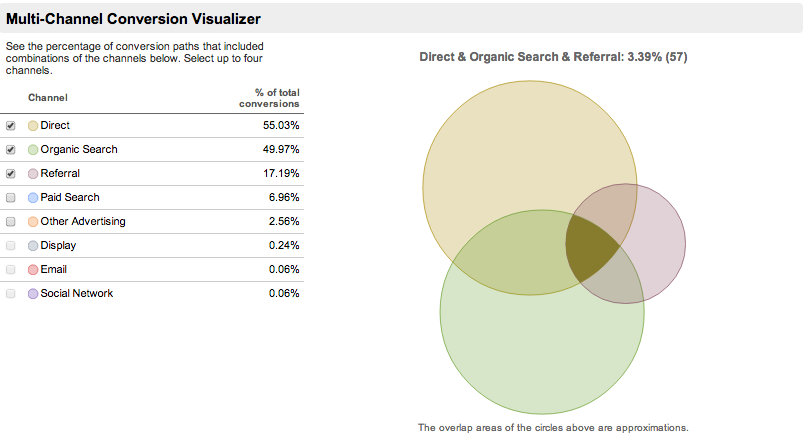Multi-channel attribution (MCA) is used to help marketers better understand what tactic, program or tool can be attributed towards a sale. With so many different online marketing avenues (Facebook, Twitter, banner ads, etc), marketers are faced with the challenge of properly attributing where or how a sale came through. Consider this scenario:
A potential car buyer is waiting at a bus stop and sees an ad for Lexus at the bus stop. When he gets onto the bus, he sees the bus drive by a billboard for Lexus. He gets home and goes online and sees an advertisement for Lexus. Later, he visits the Lexus website. The next day, he goes into his local Lexus dealership and buys a Lexus. Given the above, which of the various brand touch-points caused the man to buy his new Lexus?
The answer isn’t so clear when you mix different variables (both online and offline) into the same equation; however, through tracking online, one may have a better understanding of where marketing dollars are best spent online. Using Google Analytics (GA), there are options to track where conversions (typically purchases) come through using GA’s multi-channel funnel (MCF) tool. The below is a screenshot of MCF in action.
 The data seen above is true conversion data for a business I’ve worked with (the date range and revenue amounts are hidden for client confidentiality). MCF shows that 49.97% of all sales on the website have some form of “Organic Search” attribution, which means that somebody has at some point come to this particular business website through searching for it online before buying a product from the website. Of interest, advertising is attributed with less than 10% of all online purchases, and of even more interest, “Social Network” makes up only 0.06% of all sales attribution. What that means is that 0.06% of all sales from this particular website have some form of attribution towards a social network (Facebook, Twitter, Pinterest, LinkedIn, etc). Looking at the sample size of 1 above, one may come to the conclusion that for this particular business, social networks simply do not play an important role in selling the product. However, after working with dozens of businesses in a variety of industries (B2B, B2C, software, personal care, etc), the low attribution of online sales towards social is a clear theme across all industries. The highest percent attribution I have seen for social sales is 1.2% of all sales for a B2C e-commerce business.
The data seen above is true conversion data for a business I’ve worked with (the date range and revenue amounts are hidden for client confidentiality). MCF shows that 49.97% of all sales on the website have some form of “Organic Search” attribution, which means that somebody has at some point come to this particular business website through searching for it online before buying a product from the website. Of interest, advertising is attributed with less than 10% of all online purchases, and of even more interest, “Social Network” makes up only 0.06% of all sales attribution. What that means is that 0.06% of all sales from this particular website have some form of attribution towards a social network (Facebook, Twitter, Pinterest, LinkedIn, etc). Looking at the sample size of 1 above, one may come to the conclusion that for this particular business, social networks simply do not play an important role in selling the product. However, after working with dozens of businesses in a variety of industries (B2B, B2C, software, personal care, etc), the low attribution of online sales towards social is a clear theme across all industries. The highest percent attribution I have seen for social sales is 1.2% of all sales for a B2C e-commerce business.
So if you have marketing budgets to put towards either social networks, advertising, or some other program – unless you have a strong case for a good social ROI, I would advise putting dollars to something else. Of course, not all social networking strategies are the same, so your business may actually have a case for garnering strong sales through social networks, but I would definitely say that’s the exception and not the norm.
Victor Tang

3 Responses to Multi-Channel Attribution: Does Social Sell?